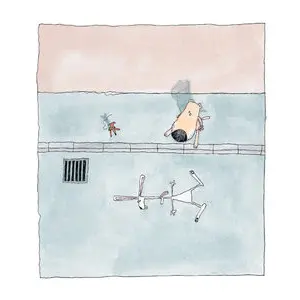
The Flat Rabbit, Barour Oskarsson
Golang util to easily flat a nested map into a 1-level deep one.
- Prefix selection
- Separator selection
- Transformers to preprocess each node for advanced use cases
go get github.com/pricelessrabbit/flatr
toFlat := map[string]any{
"foo": "bar",
"nest": map[string]any{
"bar": "baz",
},
"list": []any{
map[string]any{
"id": 1,
"data": "data1",
},
map[string]any{
"id": 2,
"data": "data2",
},
},
}
f := flatr.New()
flatted, err := f.Flat(toFlat)
/* result
map[
foo: bar
list.0.data: data1
list.0.id: 1
list.1.data: data2
list.1.id: 2
nest.bar: baz
]
*/Add options to the constructor to use them: flatr.New(Option1(),Option2()...)
Adds a prefix to all the flatted keys
f := New(flatr.WithPrefix("namespace"))
flatted, _ := f.Flat(toFlat)
/* result
map[
namespace.foo: bar
namespace.list.0.data: data1
namespace.list.0.id: 1
namespace.list.1.data: data2
namespace.list.1.id: 2
namespace.nest.bar: baz
]
*/Choose path separator (default .)
f := New(flatr.WithSeparator("_"))
flatted, _ := f.Flat(toFlat)
/* result
map[
foo: bar
list_0_data: data1
list_0_id: 1
list_1_data: data2
list_1_id: 2
nest_bar: baz
]
*/Transformers:
- Have access to the entry related to node being flatted
- Can read and update node key, value, and set a stop flag to block children processing
define a max deep for the flattening process. after reaching the max deep, the children of the current will be left untouched.
toFlat := map[string]any{
"foo": []any{
map[string]any{"id": "a", "data": 10},
map[string]any{"id": "b", "data": 20},
},
"bar": []any{
map[string]any{"id": 1, "data": 30},
map[string]any{"id": 2, "data": 40},
},
}
f := New(
AddTransformer(MaxDeep(2)),
)
flatted, _ := f.Flat(toFlat)
/*
map[
foo.0: {"id": "a", "data": 10}
foo.1: {"id": 1, "data": 30}
bar.0: {"id": 1, "data": 30}
bar.1: {"id": 2, "data": 40}
]
*/
if the current node is a slice, use the value of the given field (eg id) as index instead
of the array index.
toFlat := map[string]any{
"foo": []any{
map[string]any{"id": "a", "data": 10},
map[string]any{"id": "b", "data": 20},
},
"bar": []any{
map[string]any{"id": 1, "data": 30},
map[string]any{"id": 2, "data": 40},
},
}
f := New(
AddScopedTransformer("foo", UseFieldAsIndex("id")),
AddScopedTransformer("bar", UseFieldAsIndex("id")),
)
flatted, _ := f.Flat(toFlat)
/*
map[
foo.a.id: a
foo.a.data: 10
foo.b.id: b
foo.b.data: 20
bar.1.id: 1
bar.1: data: 30
bar.2.id: 2
bar.2.data: 40
]
*/It is possible to implement custom transformers. A trasformer is valid if:
- takes an Entry
- returns the transformed Entry and an optional error
The entry field that can be transformed are:
- K the key of the node
- V the value related to the key
- H deep of the node
- Stop stops processing of the children of the current node
the transformer in the example adds the suffix "_transformed" to all the string values that are found in the structure. other value types are left untouched.
customTransformer := func (e Entry) (Entry, error) {
//check if the current entry value is a string
// and in that case add the suffix "transformed"
if s, ok := e.V.(string); ok {
e.V = s + "_transformed"
}
return e, nil
}
f := New(AddTransformer(customTransformer))
flatted, _ := f.Flat(toFlat)
/*
map[
foo: bar_transformed
list_0_data: data1_transformed
list_0_id: 1
list_1_data: data2_transformed
list_1_id: 2
nest_bar: baz_transformed
]
*/